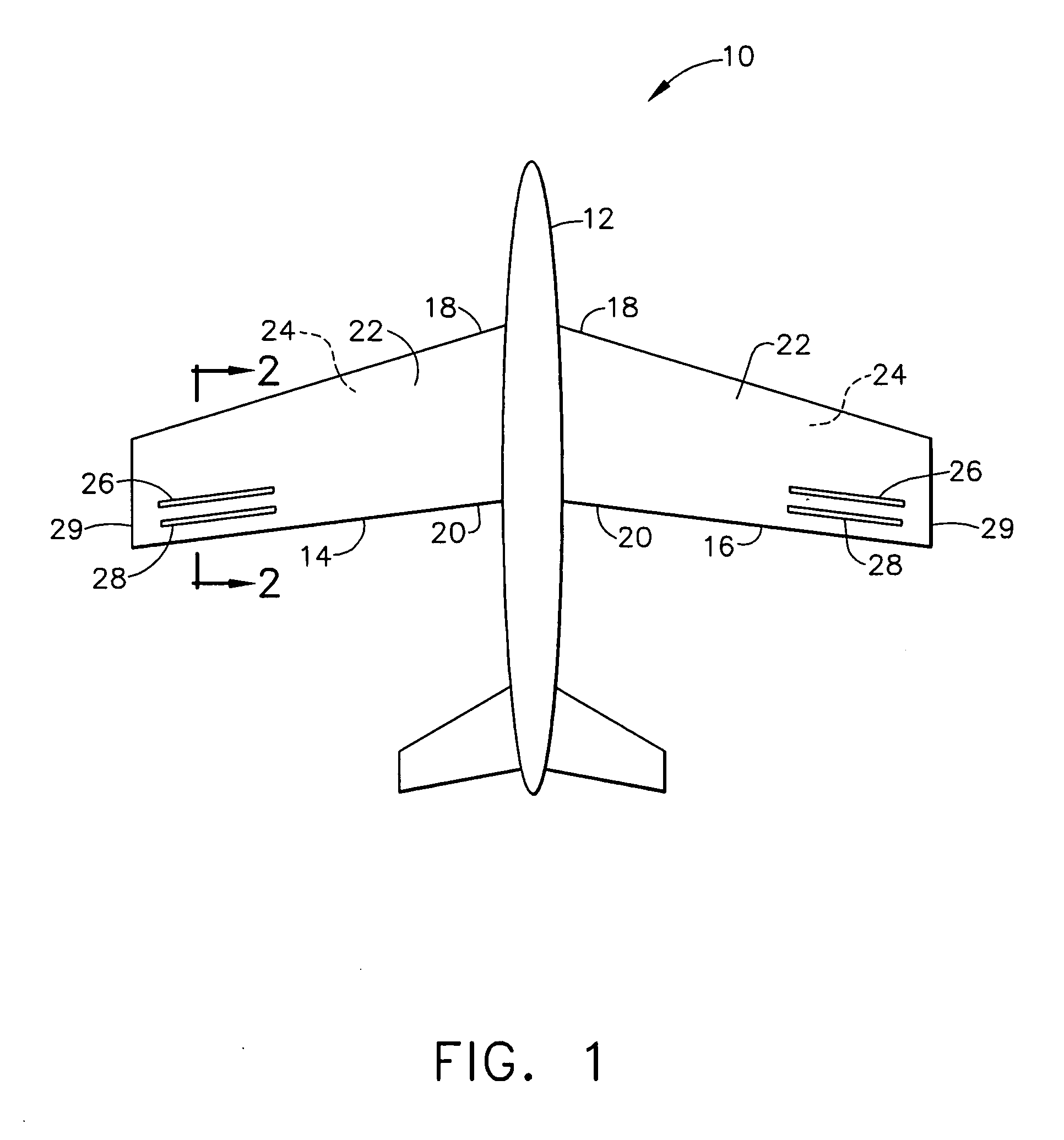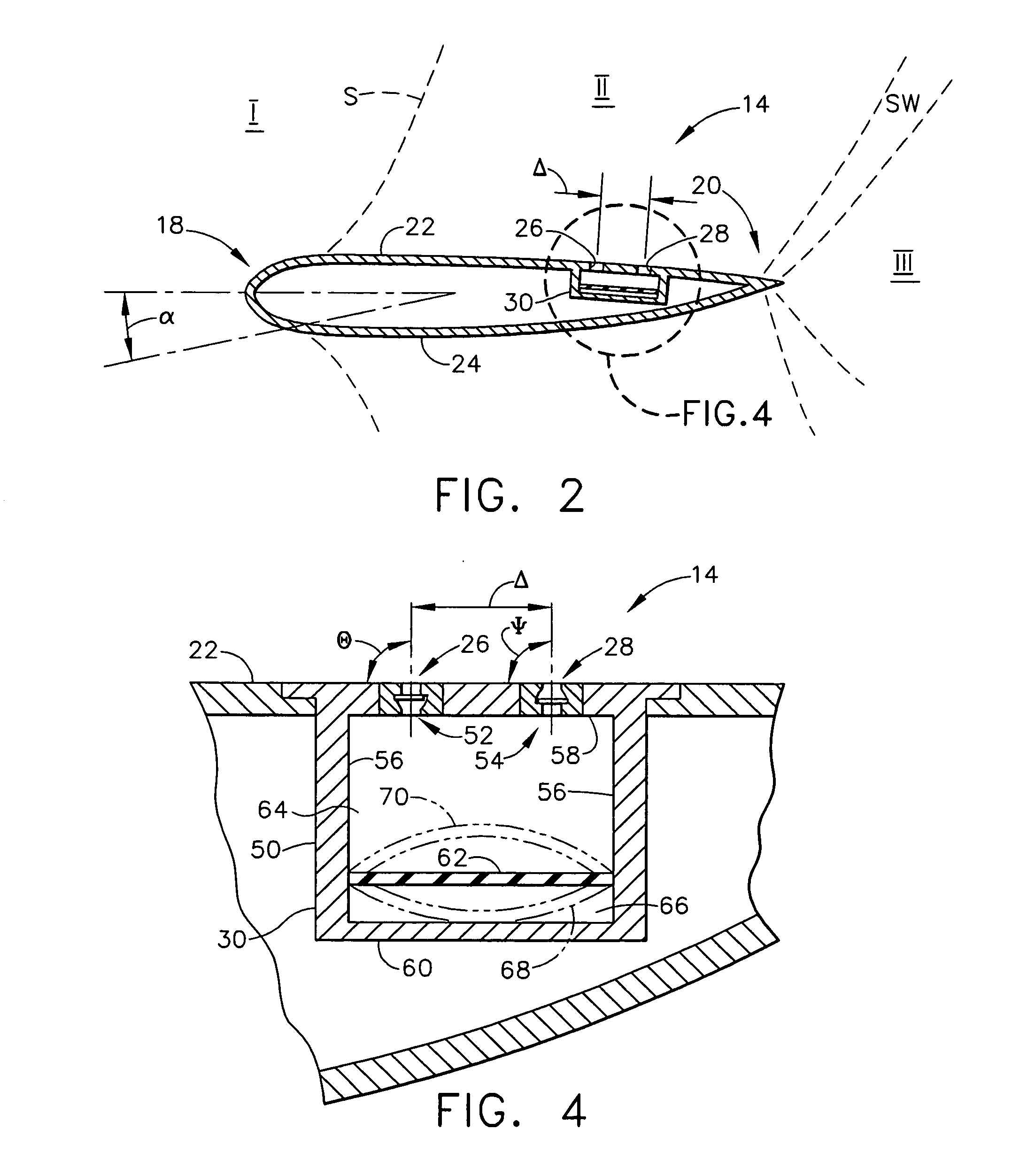Dual point active flow control system for controlling air vehicle attitude during transonic flight
a technology of active flow control and transonic flight, which is applied in the direction of aircraft navigation control, boundary layer control, drag reduction, etc., can solve the problems of increasing manufacturing cost, increasing weight, and generally requiring substantial infrastructur
- Summary
- Abstract
- Description
- Claims
- Application Information
AI Technical Summary
Benefits of technology
Problems solved by technology
Method used
Image
Examples
Embodiment Construction
[0016] The present invention relates to air vehicles and, more particularly, to air vehicles having an active flow control system for controlling vehicle attitude during transonic flight. Although the devices, systems, and methods for using them consistent with the present invention are primarily discussed with reference to air vehicles, they may be applied to other products (e.g., watercraft and land vehicles) without departing from the scope of the present invention.
[0017] Referring now to the figures, and more particularly to FIG. 1, an air vehicle according to a first embodiment of the present invention is designated in its entirety by reference number 10. The air vehicle 10 has a fuselage 12 and opposite first and second wings 14, 16, respectively, extending laterally from the fuselage. Each wing 14, 16 has a leading edge 18, a trailing edge 20, an upper (or first) surface 22 extending between the edges, and a lower (or second) surface 24 extending between the edges below the ...
PUM
 Login to View More
Login to View More Abstract
Description
Claims
Application Information
 Login to View More
Login to View More - R&D
- Intellectual Property
- Life Sciences
- Materials
- Tech Scout
- Unparalleled Data Quality
- Higher Quality Content
- 60% Fewer Hallucinations
Browse by: Latest US Patents, China's latest patents, Technical Efficacy Thesaurus, Application Domain, Technology Topic, Popular Technical Reports.
© 2025 PatSnap. All rights reserved.Legal|Privacy policy|Modern Slavery Act Transparency Statement|Sitemap|About US| Contact US: help@patsnap.com



